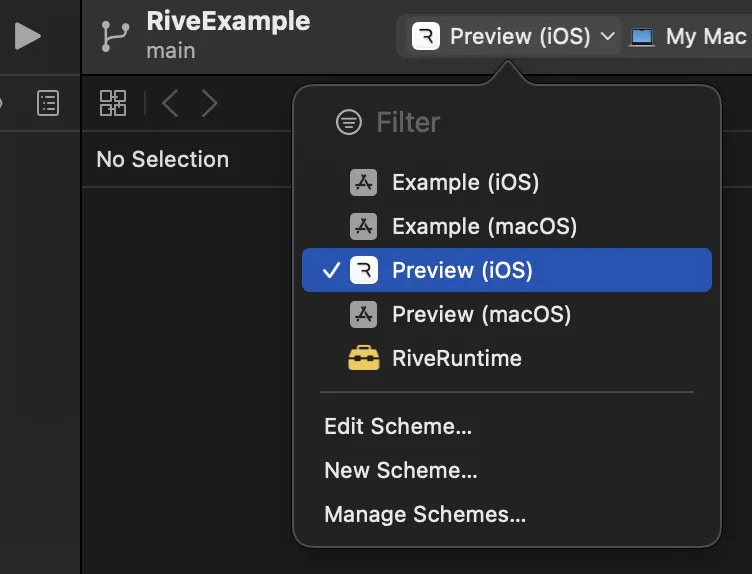Overview
This guide documents how to get started using the Apple runtime library. Rive runtime libraries are open-source. The source is available in its GitHub repository. This library contains an API for Apple apps to easily integrate their Rive assets for both UIKit/AppKit and SwiftUI. The runtime can also be installed via Cocoapods or Swift Package Manager. The minimum iOS target is 14.0, and the target for macOS is13.1
Note: macOS runtime support is included in
v4.0.1+Example-iOS app in XCode and be sure to select the Preview (iOS) or Preview (macOS) scheme. The other schemes are for development purposes and require additional configuration, see CONTRIBUTING.MD.

Getting Started
Follow the steps below for a quick start on integrating Rive into your Apple app.1
2
Importing Rive
Add the following to the top of your file where you utilize the Rive runtime:
3
v2 Runtime Usage
In Rive Apple runtimes of versions 2.x.x or later, the primary object you’ll use is a In the above example, you reference the name of a
RiveViewModel. It is responsible for creating and interacting with Rive assets.SwiftUI
Set up RiveViewModel w/ View.riv asset bundled into your application, but you can also load in a .riv file hosted on a remote URL like so:UIKit - Storyboard
Set up RiveViewModel w/ Controller formatted on a Storyboard
The simplest way of adding Rive to a controller using Storyboards is to make aRiveViewModel, and set its view to be the RiveView you made in the Storyboard.UIKit - Programmatic
Set up RiveViewModel w/ Controller from scratch in code
You can also add Rive to a controller purely with code by making theRiveViewModel, telling it to create a fresh RiveView and then adding it to the view hierarchy.